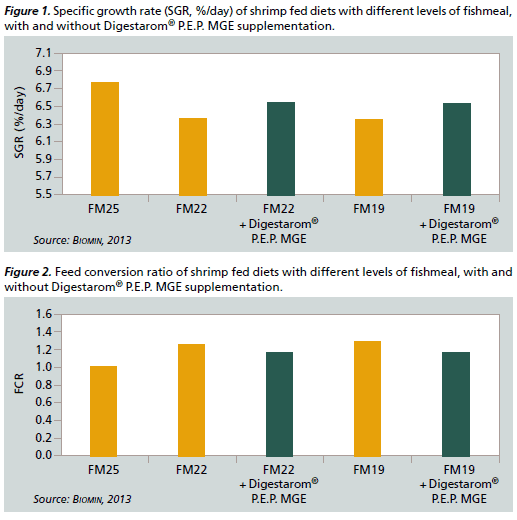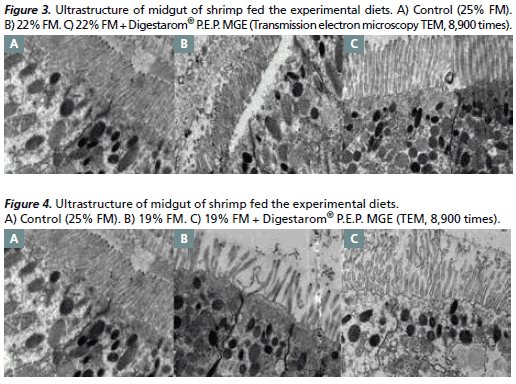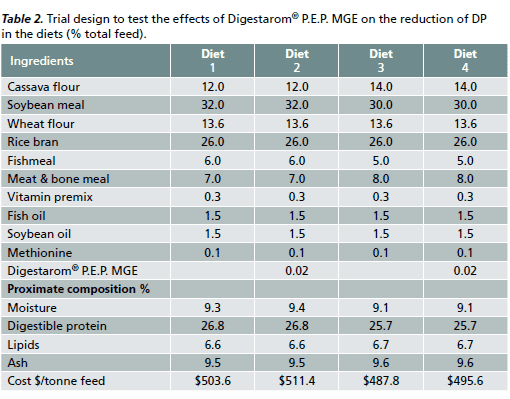Phytogenics
A nutrient-sparing tool for efficient aquafeeds
Feed is the single largest cost item in aquatic production. Because of this, the aquaculture industry strives to reduce feed costs by buying cheaper feeds. Reformulating diets to include non-traditional feed sources may be necessary to fulfill this objective, and should be viewed as a worthwhile investment that yields returns for the producer.
The increasing reliance on less costly protein sources and low nutrient dense diets will most likely see greater utilization of raw materials with lower protein digestibility, higher amino acid imbalance, and higher carbohydrate and fiber content. This can lead to an inefficient utilization of the nutrients in the feed, resulting in increased feed usage and costs to produce 1kg of lean fish, in addition to sub-optimal animal performance.
Nevertheless, when presented with accurate nutrient and energy utilization data, fish nutritionists, feed manufacturers and fish producers may balance the combination of cost effective feed ingredients and make use of certain feed additives that can improve nutrient utilization and enhance the animal’s health and performance.
Phytogenics comprise a relatively young class of feed additives that are gaining interest within the aquaculture industry. Phytogenic feed additives (PFAs) are plantderived substances which are added to the feed in order to improve animal performance. These plant active ingredients (e.g. phenolics and flavanoids) can exert multiple effects on the animal, such as antimicrobial action and direct reduction of gut bacteria, stimulation of gastric juices, support of liver function, anti-inflammatory and antioxidant properties. Due to their proven effects on improving feed efficiency, PFAs could be an important tool to reduce feed costs in the context of high prices of feed ingredients such as fishmeal (FM) and increasing reliance on cheaper raw materials.
Biomin has been conducting extensive research on the application of PFAs in aquatic species focusing on the improvement in feed efficiency and development of cost-effective diets. To test whether PFAs can be used as a nutrient-sparing tool in aquafeed formulations, a series of trials were conducted in different aquatic species.
Phytogenics with less fishmeal
One feeding trial was conducted in collaboration with Ningbo University (China) to evaluate whether a PFA (Digestarom® P.E.P. MGE) could be used as a tool to reduce the level of FM in shrimp diets.
The treatments consisted of 5 isoproteic diets (40% crude protein) with a positive control diet with 25% FM inclusion, and four test diets with two lower levels of FM (22% and 19%) with or without tDigestarom® P.E.P. MGE (Table 1). Each diet was randomly assigned to 5 replicates of 30 juvenile white shrimp (approximately 0.33±0.00g) and fed over 8 weeks.
The results indicated that the reduction in FM reduced shrimp 
The performance improvement of the group given lower FM diets supplemented with Digestarom® P.E.P. MGE is an important result as part of a strategy to reduce costs.
Phytogenics with less digestible protein
In another trial, the effects of Digestarom ® P.E.P. MGE were tested on red tilapia feeds where digestible protein (DP) was reduced by 1%. Treatments consisted of 4 diets with 2 DP levels (26% and 27%). Each DP level was with or without supplementation with Digestarom® P.E.P. MGE at an inclusion level of 0.2g/kg feed (Table 2).
Each treatment had 4 replicates and 80 fish (initial weight 7.3 ± 0.0 g) randomly assigned to each of the 20 tanks (volume 120L). The experiment lasted for 56 days.
Trial results showed that a reduction in DP levels in the feed from 27% to 26% caused a slight loss in weight gain and final body weight and an increase in FCR. However, the inclusion of the phytogenic product was effective in offsetting any decline in fish performance (weight gain and FCR) observed in feeds with lower DP.

Thus, for the diet with 27% DP, the cost of feeding to produce 1 tonne fish is $664.80 ($503.60 x 1.32) while the cost for the 27% DP + Digestarom® P.E.P. MGE diet is $644.40 ($511.40 x 1.28). This means a reduction in costs of $20.40 per tonne of fish produced. Similar cost reductions were observed for the 26% DP diets—feed costs were $663.40 for the unsupplemented diet vs. $644.3 for the supplemented diet.
This shows that the phytogenic feed additive Digestarom® P.E.P. MGE can be used as a nutrient-sparing tool for more efficient and cost-effective diets.
July 2014




